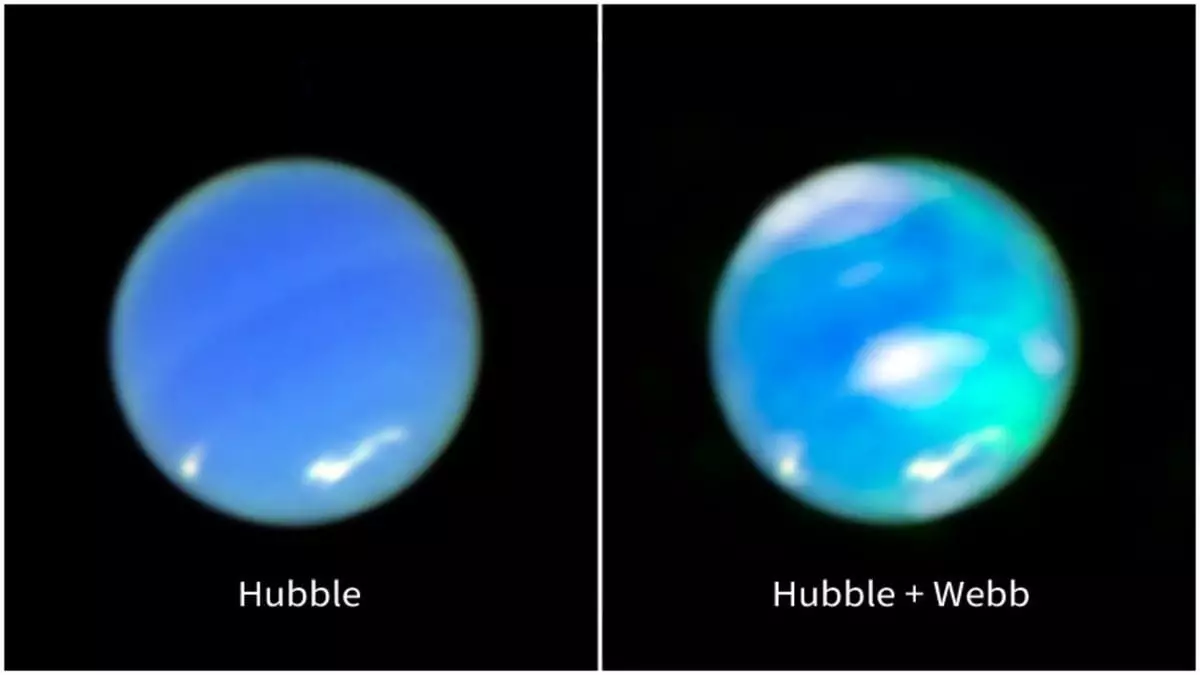In a monumental leap for planetary science, the James Webb Space Telescope (JWST) has unveiled the first ever images of auroras on Neptune, an achievement that finally puts to rest decades of speculation. This revelation isn’t just a spectacular visual; it marks a transformative moment in our understanding of Neptune’s atmospheric dynamics. The capture of these elusive auroras, once thought to be mere conjectures based on Voyager 2’s partial data, is a testament to the power of modern astronomical technology. This breakthrough isn’t solely about “seeing” Neptune glow; it conveys the complexity of an ice giant that continues to tease and intrigue.
A Different Kind of Auroral Display
What makes Neptune’s auroras particularly captivating is their deviation from the norms established by other planets. On Earth, Jupiter, and Saturn, auroral occurrences are largely confined to the poles due to their relatively straightforward magnetic fields. However, Neptune flips this script, showcasing auroras in unanticipated regions of its atmosphere—an anomaly attributed to its highly tilted magnetic field. Such irregularities invite us to rethink longstanding models of planetary atmospheres and their interaction with solar winds. This revelation hints at layers of complexity in Neptune’s environment that we have yet to fully comprehend.
The Science Behind the Spectacle
Crucial to this discovery is the technology that enabled it: JWST’s Near-Infrared Spectrograph (NIRSpec). The detection of the trihydrogen cation (H3+) is particularly significant, serving as a hallmark of auroral activity in gas giants. This was a missing piece in the puzzle, as ground-based studies failed to furnish evidence of this ion on Neptune. Heidi Hammel, a leading JWST scientist, emphasized the importance of this finding in contextualizing Neptune’s behavior among its gas giant siblings. The precision of JWST’s measurements isn’t merely an isolated triumph; they penetrated deeper into Neptune’s ionosphere and revealed a chilling truth—the upper atmosphere is now significantly cooler than it was during the Voyager 2 encounter in 1989.
The Implications of Cooling
Melin’s remarks on the drastic temperature drop—observed to be about half of what it was back in the late ’80s—bring forth a new narrative. A cooler atmosphere may play a pivotal role in further limiting auroral emissions, making them more challenging to detect and understand. This cooling points to broader implications for atmospheric dynamics on Neptune and possibly foreshadows scenarios that could emerge on similar celestial bodies. It underscores how much we have to learn about the climate of distant planets and the manifestations of their exotic conditions.
A Call for Future Exploration
As this new era of exploration dawns, scientists like Leigh Fletcher advocate for infrared-sensitive tools to be standard on upcoming missions studying the outer planets. The gateway to these hidden realms is now more accessible, but it also bears the responsibility of deeper exploration. This awe-inspiring revelation should ignite public imagination and investment in the sciences, not merely for the sake of understanding our cosmic neighbors, but also for the right to uncover the mysteries of our very existence. Embracing the wonder fueled by JWST’s findings, we propel ourselves into a future that holds limitless possibilities.


Leave a Reply